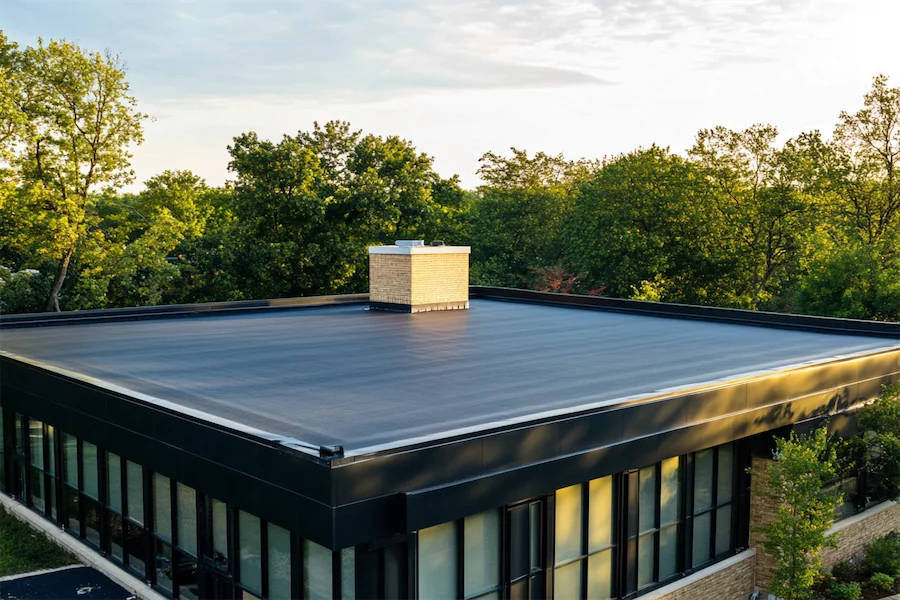An EPDM (Ethylene Propylene Diene Monomer) roof is a type of single-ply roofing membrane made from synthetic rubber, commonly used for low-slope buildings. Known for its durability and flexibility, EPDM roofing is a popular choice in both commercial and residential applications.
History and Origins of EPDM Roofs
Developed in the 1950s, EPDM roofing systems were first utilized in the 1960s. Their adoption grew due to the material’s resilience and cost-effectiveness, making them a staple in the roofing industry over the past several decades.
Key Features of EPDM Roofs
- Durability and Longevity: EPDM roofs are known for their long lifespan, often lasting up to 30 years or more with proper maintenance. The material’s resistance to UV radiation and weathering contributes to its longevity.
- Flexibility: The synthetic rubber composition allows EPDM membranes to remain flexible in various temperatures, accommodating structural movements without cracking or splitting.
- Ease of Installation: EPDM membranes are available in large sheets, reducing the number of seams and simplifying the installation process. They can be installed using various methods, including fully adhered, mechanically attached, or ballasted systems.
- Cost-Effectiveness: Compared to other roofing materials, EPDM offers a relatively low installation cost, making it an economical choice for large-scale roofing projects.
Applications of EPDM Roofs
EPDM roofing systems are predominantly used in low-slope or flat roof designs, commonly found in commercial buildings, warehouses, and office complexes. Their adaptability also makes them suitable for residential structures with flat or gently sloping roofs.
Considerations When Choosing EPDM Roofs
- Color Options: EPDM membranes are typically available in black or white. Black EPDM absorbs heat, which can be beneficial in colder climates, while white EPDM reflects sunlight, aiding in cooling and energy efficiency in warmer regions.
- Maintenance: Regular inspections are necessary to identify and repair any damage, such as punctures or seam separations, to maintain the roof’s integrity over time.
- Compatibility: EPDM is not compatible with all roofing materials. Contact with certain products, like asphalt-based materials, can cause degradation, so it’s important to ensure compatibility during installation and repairs.
Conclusion
EPDM roofing systems offer a durable, flexible, and cost-effective solution for low-slope roofing needs. With proper installation and maintenance, an EPDM roof can provide reliable protection and performance for decades, making it a viable option for various building types.
